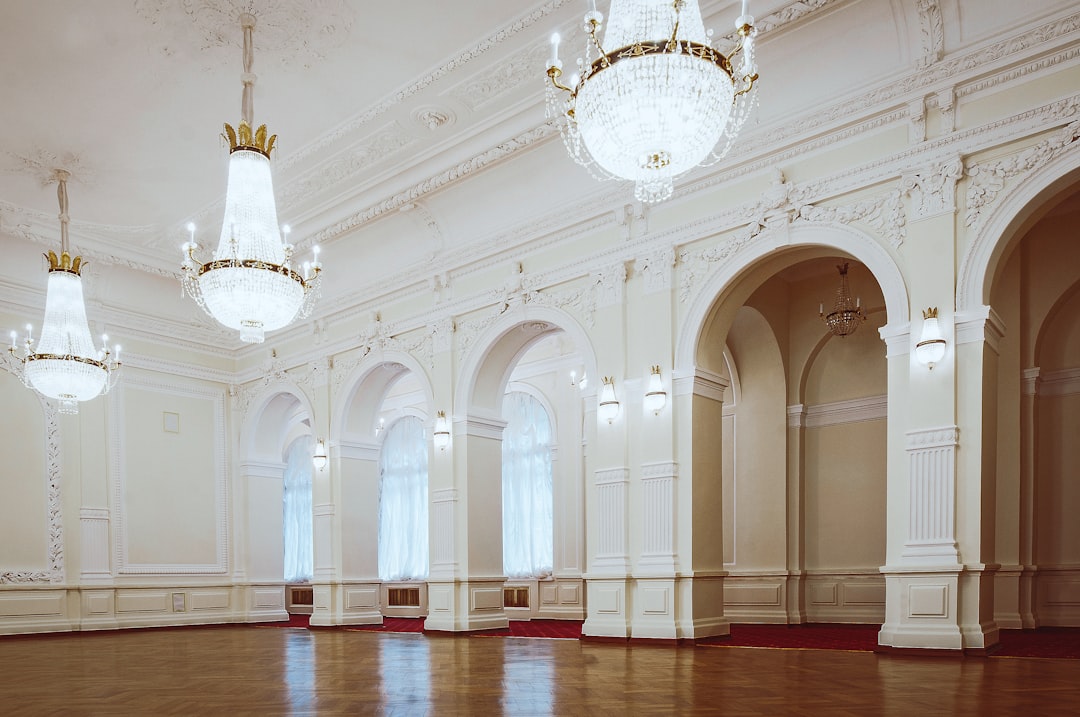A Legacy Built on Faith and Stone (Image Credits: Unsplash)
Washington, D.C. – Amid the buzz of construction dust and neoclassical sketches, a quiet firm is reshaping one of America’s most famous addresses with elegant columns and intricate details that echo the past.
A Legacy Built on Faith and Stone
Picture stepping into a soaring cathedral where every arch and altar feels like a whisper from history. McCrery Architects has made its name in ecclesiastical designs, creating spaces that blend reverence with refined beauty. Their work often starts with the idea that buildings should inspire, much like the grand old churches of Europe adapted for American soil.
James McCrery, the firm’s founder, believes architecture should strengthen community and spirit. This philosophy shines through in projects that prioritize harmony over flash. It’s no wonder their churches draw people in, offering a sense of permanence in a fast-changing world.
Standout Sacred Projects Across the Country
One of the firm’s highlights is the Cathedral of the Most Sacred Heart of Jesus in Knoxville, Tennessee. Completed with meticulous care, it features vaulted ceilings and natural light that flood the interior, creating an atmosphere of quiet awe. Visitors often describe it as a modern take on timeless worship spaces.
In Raleigh, North Carolina, the Holy Name of Jesus Cathedral stands as another testament to their skill. This project involved restoring and expanding an existing structure, ensuring the new elements felt seamless with the old. Meanwhile, in the mountains of Highlands, North Carolina, Our Lady of the Mountains offers a cozy yet majestic retreat, perfect for a small community seeking solace.
Down in Aiken, South Carolina, St. Mary Help of Christians earned the firm a prestigious award in 2017 for its ecclesiastical excellence. McCrery himself noted that beauty in design can uplift the soul, a goal they hit squarely here. Even smaller elements, like the baptismal font at the Church of the Holy Spirit in Gloversville, New York, show their attention to detail – this year’s honor proves they excel at every scale.
Extending Grace to Learning Environments
Beyond pews and altars, McCrery Architects has ventured into academia, where knowledge meets tradition. At the University of Saint Mary of the Lake in Mundelein, Illinois, they designed the Feehan Memorial Library, a space that combines scholarly quiet with classical elegance. Rows of bookshelves under high ceilings make studying feel almost sacred.
Similarly, the Saint Thomas Aquinas Chapel at the University of Nebraska’s Newman Center in Lincoln invites students to pause amid campus life. These projects highlight how the firm adapts their style to foster reflection and growth. It’s a natural fit, given McCrery’s emphasis on architecture that supports human endeavor.
Making Marks in Public and Government Realms
The firm’s portfolio isn’t limited to spiritual or educational spots; they’ve carved out a niche in public works too. Take the pedestal for California’s Ronald Reagan statue in the National Statuary Hall Collection at the U.S. Capitol. Crafted from Tennessee Rose marble and embedded with pieces of the Berlin Wall, it adds a layer of historical depth to the display.
They also revamped the U.S. Supreme Court’s book and gift shop, turning a functional area into something polished and inviting. And in North Carolina, the state legislature tapped them for a master plan of the historic State Capitol Grounds, aiming to preserve while enhancing the site’s grandeur. These gigs show their growing influence in official circles, where tradition meets civic pride.
- Pedestal for Reagan statue: Symbol of resilience with Berlin Wall fragments.
- Supreme Court gift shop: Blends utility with understated elegance.
- NC State Capitol master plan: Focuses on long-term preservation.
The Bold Step into White House Territory
Now, all eyes are on their biggest canvas yet: the White House ballroom. This $250 million addition, privately funded, involves demolishing the East Wing to create a 90,000-square-foot space for 650 guests. Renderings promise neoclassical splendor, with chandeliers and ornate details that fit the mansion’s heritage.
Yet, the project stirs debate. Preservation groups worry about rushing through historic changes without full public input, and even past White House occupants have voiced concerns. McCrery’s classical roots make the design feel authentic, but the scale and speed have sparked calls for pause. It’s a high-stakes moment that could define the firm’s legacy.
Trump’s vision for the space ties into broader efforts to refresh the executive residence, echoing past makeovers while pushing boundaries. For McCrery Architects, it’s a chance to apply their expertise on a national stage, though not without controversy.
Why Classical Design Still Captivates
At its core, McCrery’s approach celebrates America’s architectural origins – think Jeffersonian symmetry and enduring forms. In a talk last year, McCrery argued that classical styles resonate because they root us in the nation’s story. This isn’t about nostalgia; it’s about building confidence through familiar beauty.
Their light online presence – mostly a simple site and empty social feeds – keeps the focus on the work itself. No flashy marketing, just commissions from those who value tradition. As the White House project unfolds, it might draw more spotlight to this understated firm.
Key Takeaways
- McCrery excels in ecclesiastical architecture, with award-winning churches nationwide.
- Their public projects, like Capitol statues and court shops, show versatility in government spaces.
- The White House ballroom represents a controversial leap, blending tradition with modern ambition.
In the end, McCrery Architects reminds us that great design endures by honoring what came before. Whether it’s a quiet chapel or a grand ballroom, their spaces invite us to connect with something larger. What do you think about blending old styles with new builds? Share your thoughts in the comments.




